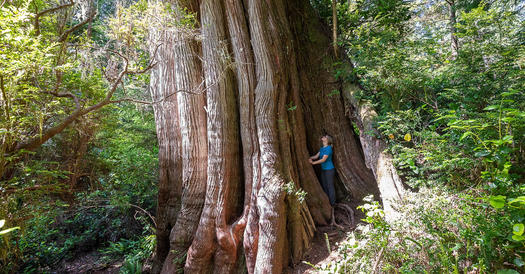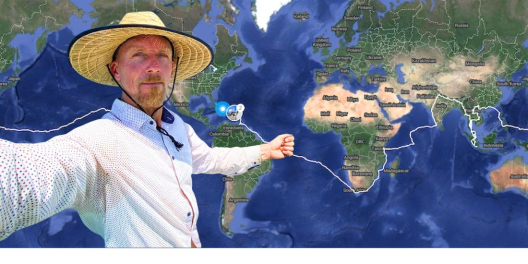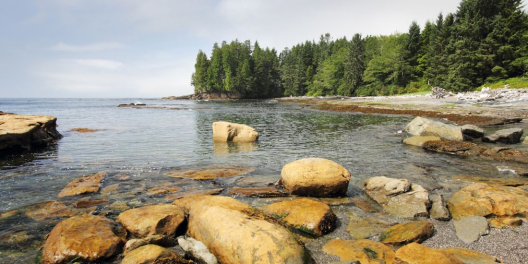Climate change is pushing cedar to the brink on Vancouver Island and elsewhere in southern BC. Western red cedar has thrived for thousands of years on the Island. Cedar was found across the West Coast through the interior wet belts found in the Shuswap Lake area, the Columbia Mountains and the Rockies as far north as Mount Robson.
But BC’s provincial tree is in trouble. More and more cedar have red boughs and needles, the telltale signs of drought stress.
In 2018 Patrick McIntosh, the City of Nanaimo’s urban forestry coordinator, reported stressed cedars everywhere and raised concerns that the once-dominant species mid-Island was slowly dying out.
“I haven’t noticed much of a recovery in impacted trees,” McIntosh said in a 2020 story published in British Columbia Magazine.
This summer’s rare heatwave will likely impact more cedar trees. Experts like McIntosh fear that red cedar will inevitably die off in its marginal habitats on the south coast, such as the east side of Vancouver Island where he lives and works.
That’s why scientists are more interested in unlocking the genetic secrets of this tree. They want to understand better how it grows in a changing climate, and resists wood rot, insect attacks and the appetites of browsing deer that love to forage on the tender boughs of the young seedlings.
The future doesn’t look good for cedar if the Island becomes drier, according to Alvin Yanchuk, a forest geneticist for the Ministry of Forests, Lands and Natural Resource Operations.
“Climate change models are predicting large shifts in climate ‘spaces’ for most of our tree species,” Yanchuk says. “It’s very difficult to predict in any exact spot what will happen, but in general, things don’t look good for red cedar in the dryer places on the island and the mainland.”
Among evergreen trees, western red cedar is decidedly unique. It is long-lived, in some cases reaching more than a thousand years in age. It can grow to huge dimensions.
The largest known tree in Canada is the Cheewhat Giant, a red cedar found in Pacific Rim National Park Reserve. It measures a six-metre circumference at the butt, soars to nearly 60 metres (higher than a 12-story building) and contains 450 telephone poles worth of wood.
New cedars can sprout in damp, rich soil or old wood, and the old ones turn into nurse trees when they die and fall over, hosting a diversity of plant and insect life.
Cedar also has strong antimicrobial qualities. It contains chemical compounds that make it highly resistant to fungi, moulds, insects, bacteria and viruses. It’s the reason cedar is coveted for decks, fences and siding. That’s why a fallen cedar tree that has been lying on the forest floor for decades can often still be sawn into solid cants or carved into a canoe. In contrast, a Douglas fir or hemlock tree would have long since rotted and been reabsorbed into the forest floor.
The late John Russell, a forest service scientist, did pioneering research into western red cedar genetics. For example, his work bred cedar seedlings that are more resistant to deer browsing (it’s estimated that browsing costs the province’s silviculture program up to $25 million annually.)
Though economic considerations generally drive government research, Russell was a pure scientist at heart. In 2010 Russell organized a symposium at UVic called a Tale of Two Cedars. It brought together experts from across the Pacific Northwest to share research into all aspects of western red cedar and its distant relative yellow cedar.
Russell highlighted the challenges facing cedar in his presentation, noting that climate change is happening “faster than the rate of population migration via seed and pollen.” Ten years later, his call to action has taken on a greater sense of urgency.
“There’s nothing not to like about cedar. It’s long-lived and extremely important for biodiversity and cultural purposes,” says Cosmin Filipescu, a research scientist at the Natural Resource Canada’s Pacific Forestry Centre in Victoria. “I’m a scientist, so I deal in facts, but all signs are pointing to cedar struggling on the south coast.”









